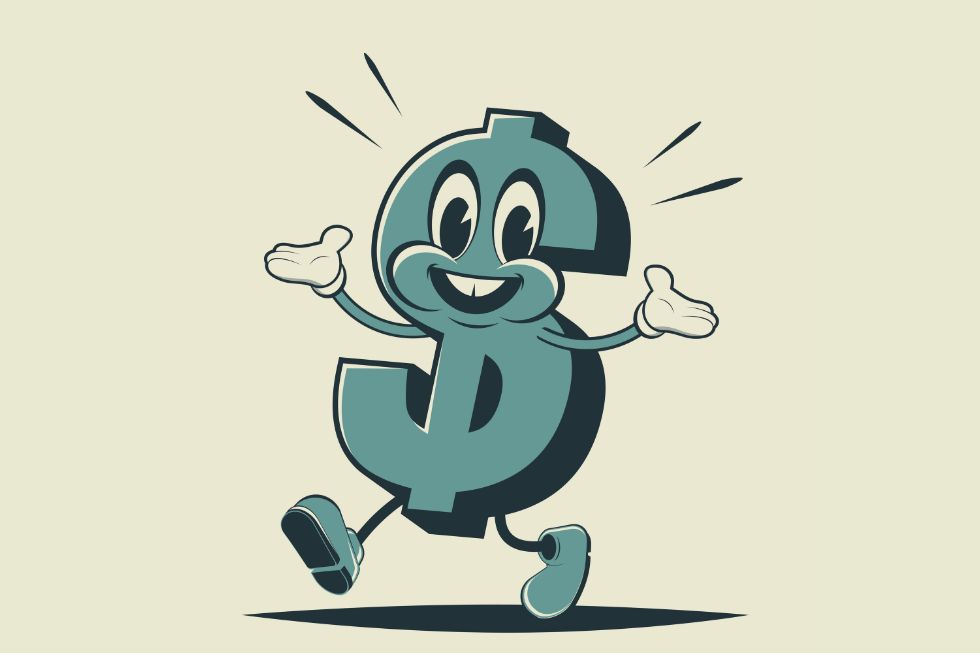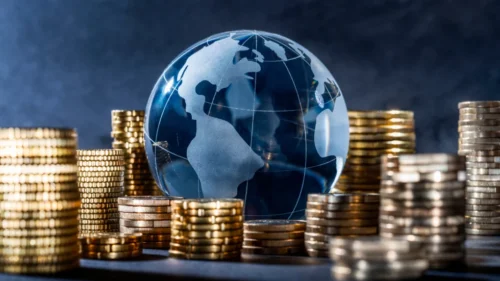The United States dollar (USD) has long functioned as the world’s preeminent reserve currency, exerting substantial influence over global trade, financial markets and monetary-policy transmission. Its valuation patterns, characterized by cyclical appreciation and depreciation, were insightfully analyzed by economist Stephen Jen in his “Dollar Smile” theory, introduced in 2001. This framework provides a lens through which to interpret fluctuations in the dollar’s strength and anticipate its future trajectory. However, structural shifts in global financial markets, particularly after the Global Financial Crisis (GFC), necessitate a reassessment of the traditional Dollar Smile paradigm, as evolving capital flows, changing investor behavior, and shifting monetary policies alter the USD’s role as a safe haven asset.
Understanding the Dollar Smile theory
The Dollar Smile theory posits that the USD appreciates under two extreme scenarios: (1) When the US economy exhibits exceptional strength and (2) when the global economy faces significant distress, which prompts investors to seek safe haven assets. Conversely, during periods of moderate US growth coupled with improving global economic conditions, the dollar tends to weaken. This relationship creates a “smile”-shaped curve with three distinct phases:
1. Left side of the smile: global economic distress
During financial crises or heightened geopolitical uncertainties, investors gravitate toward safe haven assets, notably the USD, due to its liquidity and perceived stability. Historically, this phenomenon was evident during the 2008 financial crisis and the early stages of the Covid-19 pandemic, where global uncertainty triggered a surge in demand for the dollar. The mechanism behind this movement involves global deleveraging, a flight to quality and the unwinding of carry trades, all of which bolster the dollar’s value.
2. Middle of the smile: moderate US growth and global optimism
When the US economy experiences steady but unspectacular growth, coupled with global economic expansion, capital tends to flow into higher-yielding assets in emerging and developed markets. This shift in portfolio allocations leads to a depreciation of the USD, as investors seek superior returns outside dollar-denominated assets. During such periods, the Federal Reserve’s monetary policy stance, relative interest rate differentials and global risk appetite collectively shape the trajectory of the USD.
3. Right side of the smile: robust US economic performance
The dollar strengthens when the US economy significantly outperforms global counterparts, characterized by strong GDP growth, a tight labor market and relatively high interest rates. Under such conditions, foreign capital inflows into US assets increase, driving up demand for the dollar. Notably, this phase was observed during the Federal Reserve’s aggressive rate hikes in 2018, which led to a strong appreciation of the USD against major global currencies.

The evolving Dollar Smile: from safe haven to smirk
Recent structural shifts have altered the traditional Dollar Smile framework, raising questions about the extent to which the USD retains its safe haven status. Nicolas Wall, JP Morgan’s Head of Global FX Strategy, Global Fixed Income Currency & Commodities, argues that the effectiveness of the dollar as a refuge in crises has diminished due to changes in capital flow dynamics and the deterioration of the US net international investment position. Historically, downturns prompted capital repatriation to the US, reinforcing the dollar’s strength. However, current trends suggest that capital may instead flow into international markets such as Taiwan, Japan and Korea, particularly given the rising costs of hedging USD-denominated investments. Moreover, foreign holdings of US assets are increasingly unhedged, introducing vulnerabilities that could lead to USD depreciation in risk-off scenarios.
Structural shifts in global interest rates further reduce the USD’s comparative appeal, as lower-yielding currencies such as the yen and Swiss franc become more favorable alternatives during periods of uncertainty. Consequently, the traditional “Dollar Smile” may now resemble more of a “smirk,” where the right-side appreciation effect is muted by shifting global investment patterns.

Current trends and potential dollar adjustment
Market indicators suggest that the USD is transitioning toward the middle phase of the Dollar Smile curve, which signals a potential period of depreciation. Jen estimates that the dollar against a basket of all other currencies remains approximately 20% overvalued, implying a prolonged adjustment rather than an abrupt decline. He highlights that per capita income in Mississippi — one of the poorest states in the US — surpasses that of the United Kingdom, France, Italy and Japan, which indicates that the currency’s purchasing power has become excessively high. He doesn’t expect a dollar crash, but rather a multi-year adjustment. Since its peak in January, the dollar index has declined by approximately 5%. Several key factors support this outlook:
- Moderation in US economic growth: While the US economy has displayed resilience, emerging signs of slowdown — such as a cooling labor market and weakening corporate future earnings — have fueled speculation.
- Geopolitical tensions and trade policies: Ongoing geopolitical frictions, particularly US–China trade disputes and increasing protectionist measures, raise concerns about the long-term stability of the dollar. Uncertainty surrounding America’s role in global trade could erode investor confidence and accelerate capital outflows from USD-denominated assets.
Reassessing Dollar Smile amid economic uncertainty
The Dollar Smile theory remains a valuable framework for analyzing USD dynamics, yet its traditional assumptions require reassessment in light of evolving global economic trends. While the dollar appears to be entering a prolonged weakening phase, uncertainties surrounding trade, geopolitics and Federal Reserve policy suggest that fluctuations will persist. Investors and policymakers must navigate these complexities carefully as they assess the dollar’s role in the evolving international financial landscape.
Amid these developments, the prospect of a new currency agreement — informally referred to as the “Mar-a-Lago Accord” — resonates with historical precedents such as the Plaza Accord. Given President Trump’s strategic use of tariffs as a negotiating lever, a prolonged cycle of punitive tariffs could ultimately compel key trading partners, including China and Europe, to entertain some form of currency realignment in exchange for tariff relief. While speculative, such an arrangement would highlight the intricate interplay between trade policy and exchange rate dynamics, reaffirming the necessity of coordinated international responses in an era of heightened economic uncertainty.
[Lee Thompson-Kolar edited this piece.]
The views expressed in this article are the author’s own and do not necessarily reflect Fair Observer’s editorial policy.
Support Fair Observer
We rely on your support for our independence, diversity and quality.
For more than 10 years, Fair Observer has been free, fair and independent. No billionaire owns us, no advertisers control us. We are a reader-supported nonprofit. Unlike many other publications, we keep our content free for readers regardless of where they live or whether they can afford to pay. We have no paywalls and no ads.
In the post-truth era of fake news, echo chambers and filter bubbles, we publish a plurality of perspectives from around the world. Anyone can publish with us, but everyone goes through a rigorous editorial process. So, you get fact-checked, well-reasoned content instead of noise.
We publish 2,500+ voices from 90+ countries. We also conduct education and training programs
on subjects ranging from digital media and journalism to writing and critical thinking. This
doesn’t come cheap. Servers, editors, trainers and web developers cost
money.
Please consider supporting us on a regular basis as a recurring donor or a
sustaining member.
Will you support FO’s journalism?
We rely on your support for our independence, diversity and quality.







Comment